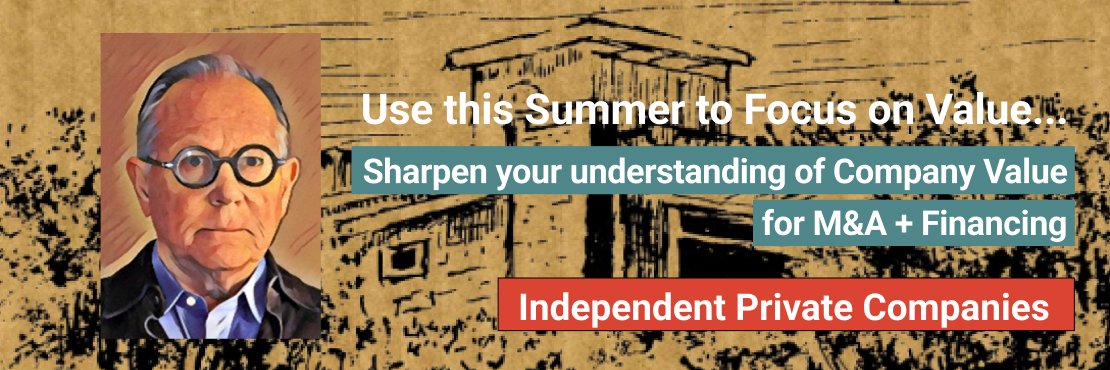Use this Summer to Focus on Value…Sharpen your Understanding of Company Value for M&A + Financing
Enjoy some time off this month if you can… whether to gauge the beach erosion on the Outer Cape as I will, or at a special place where you mark seasons and years. This market has plenty of swells, sharks and undertow.
This is a good time to confirm your grounding for how to think about what your company is worth, why that is, and why it matters regardless of whether you have a transaction underway. You knowing how lenders, investors and potential buyers gauge your business is valuable as you make decisions.
The back-to-school fall season is a busy time as many of us feel ready to lean back-in to finish ’22 as best we can and to position for ‘23. The collective activity results in scores of companies pursuing strategic partnerships and raising capital.
Are you satisfied with your understanding of how professional investors and strategic partners would determine borrowing capacity, value and structure an equity infusion, and how a strategic acquiror or private equity acquiror would approach your situation.
Most often folks reference EBITDA for a variety of multiples for financial leverage and total enterprise value. There isn’t much talk about capital investment and the balance sheet.
Viewing your company on a debt-free cash-free basis is common for a sale transaction but may be more complicated if funded debt is not being repaid as part of a larger transaction.
If you are a buyer, the notion of the target company having no cash the first day you own it can matter a great deal. Putting yourself in the shoes of the buyer is an eye-opener. Servicing the acquisition debt and producing attractive returns can be daunting. You will become very familiar with that if you hold stub equity from rolling-over a portion of the sale price.
EBITDA multiples rarely provide a full picture. That birthed the Quality of Earnings analyses that has become a routine in most deals. Think about what a thorough scrubbing of what’s behind an annual number when parsed by repeatability, seasonality, customer concentration, industry trends and management’s plans.
How comfortable are you that your monthly financial statements are complete and accurate? Keep in mind that what you may consider to be fine before increased leverage or negotiations for investment or sale may not be adequate if you are entering the market.
The cost of capital has been ratcheted up for both debt and equity. Senior debt for aggressive expansion or a buyout is much more like 8% than 4% and caps-out below 4x EBITDA including a cushion for working capital. Independent private companies are at a disadvantage to the private equity crowd.
Debt sources tend to show lots of love for the owner-operated businesses so long as the leverage is 2-3x EBITDA and become much more disciplined as borrowings are used for one-time dividends, buybacks and acquisitions.
Most of the M&A deals for mature companies valued at 8-12x are not financed by banks. Pros rely on non-bank lenders because of less regulatory restriction and more aggressive approaches. The non-bank lenders love the repeat business from buyers with track records and rely on the PE firm’s willingness to take action more swiftly if needed. There are plenty of strings attached.
We can help in many ways as we have many times.
If you’re interested in our insight just give me a call at 215-805-2093.
Patrick Hurley - MidMarket
phurley@mmadvisors.com
